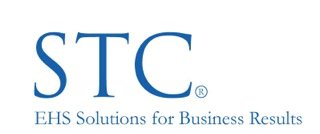 On July 6, 2012, President Obama signed into law the “Moving Ahead for Progress in the 21st Century Act (MAP-21)”.The 584-page legislation revises and adds many sections to the U.S. Code, intending to “create a streamlined, performance-based, and multi-modal program to address the many challenges faced by the US transportation system, including improving safety, maintaining infrastructure condition, reducing traffic congestion, improving efficiency of the system and freight movement, and protecting the environment” (USDOT, Federal Highway Administration).
On July 6, 2012, President Obama signed into law the “Moving Ahead for Progress in the 21st Century Act (MAP-21)”.The 584-page legislation revises and adds many sections to the U.S. Code, intending to “create a streamlined, performance-based, and multi-modal program to address the many challenges faced by the US transportation system, including improving safety, maintaining infrastructure condition, reducing traffic congestion, improving efficiency of the system and freight movement, and protecting the environment” (USDOT, Federal Highway Administration).
MAP-21 is divided into 8 divisions. Division C contains two new laws that will affect commercial motor vehicles and hazardous materials transportation: The Commercial Motor Vehicle Safety Enhancement Act of 2012 and The Hazardous Materials Transportation Safety Improvement Act of 2012.
Key provisions of the Commercial Motor Vehicle Safety Enhancement Act include the following:
-
Penalties for operating without a DOT registration will increase.
-
DOT must conduct a comprehensive analysis of the need for crashworthiness standards for property-carrying motor vehicles ≥ 26,001 lbs operating in interstate commerce.
-
DOT must prescribe regulations requiring commercial motor vehicles (CMVs) involved in interstate commerce to be equipped with an electronic logging device if they are operated by a driver subject to the hours-of-service and record-of-duty status provisions of 49 CFR 395.
-
Employers must ascertain the driving record of each of their drivers at least annually by making an inquiry to the appropriate state in which the driver holds a commercial driver’s license or permit.
-
DOT must establish minimum entry-level training requirements for an individual operating a CMV.
The Hazardous Materials Transportation Safety Improvement Act, among other provisions, requires DOT to study both of the following:
-
The implementation of the hazardous materials safety permit program (to determine if improvements need to be made); and
-
The safety of transporting flammable liquids in the external product piping (the “wetlines) of cargo tank motor vehicles.
Some of the statutory provisions have specific deadlines, typically one to two years after enactment, so expect the Federal Register to contain DOT announcements of proposed regulations to implement MAP-21's mandates soon.
More information about MAP-21 can be found on the Federal Highway Administration’s website at http://www.fhwa.dot.gov/map21.
Russ Boesch, CPEA, CHMM, is an STC Senior Program Director with more than 25 years of experience conducting environmental compliance and management systems audits, regulatory analysis, and environmental management consulting. He has managed and performed numerous EHS compliance audits throughout the United States at facilities for the aerospace, automotive, utilities, pharmaceuticals, medical devices, optical devices, laboratories, foods, electronics, petroleum refining, and chemical manufacturing industries; at commercial hazardous waste TSDFs; on cruise ships; in educational institutions; and in federal government installations. Russ has helped several large corporations design and implement audit programs by preparing facility- and state-specific audit protocols, conducting auditor training, and leading audit teams in the field. He is the Manual Lead for the DOT Hazardous Materials Transportation and Motor Safety Carrier: Federal Regulatory Guide published by Specialty Technical Publishers of Vancouver, B.C. A Certified Professional Environmental Auditor in the disciplines of Environmental Compliance and Responsible Care® Management Systems, Russ is also a Certified Hazardous Materials Manager.
For more information about these proposed rules or for information about STC's EHS consulting services, contact Russ at (603) 888-2952 or RBoesch@stcenv.com.
